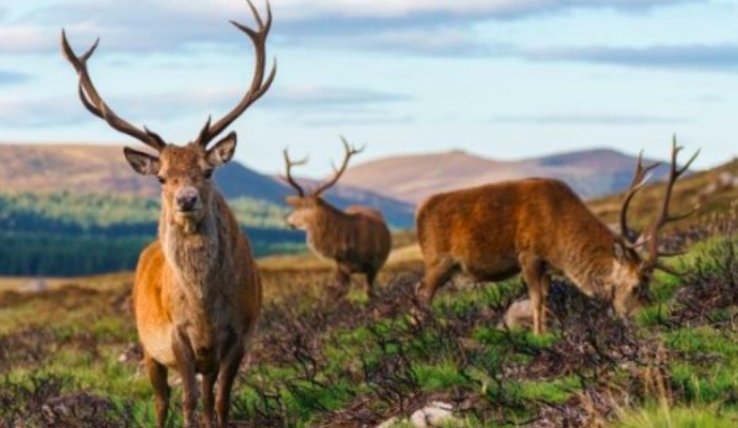It’s been centuries since a wolf’s howl echoed across the Scottish Highlands. Now, researchers believe reintroducing these top predators could do more than just restore balance to nature—it might also help pull carbon from the atmosphere.
Wolves Once Kept Scotland’s Ecosystem in Check
Wolves (Canis lupus) were wiped out from Scotland hundreds of years ago, with the last recorded killing dating back around 250 years. Their disappearance set off a chain reaction. Without their natural predator, red deer (Cervus elaphus) multiplied unchecked, gnawing down saplings before they had a chance to grow into mature woodlands. Today, Scotland’s native forests cover less than 4% of the land—one of the lowest rates in Europe.
Historical shifts in land use also played a major role. The Jacobite rebellion of 1745 led to significant deforestation, making way for vast shooting estates. Over time, the landscape evolved into the open, deer-dominated Highlands we see today.

A ‘Keystone’ Species With Big Potential
The concept of wolves shaping their environment isn’t new. In the U.S., their reintroduction to Yellowstone National Park has been widely studied, showing how a predator can restore balance to an ecosystem. Scottish researchers believe a similar process could happen in the Highlands.
Environmental scientist Dominick Spracklen from the University of Leeds, who led the recent study, emphasizes the connection between biodiversity and climate action. “There is an increasing acknowledgment that the climate and biodiversity crises cannot be managed in isolation,” he says.
The study’s simulations suggest that introducing wolves in four key Scottish regions—Cairngorms, South-West Highlands, Central Highlands, and North-West Highlands—could lead to a population of 167 wolves over two decades. That would be enough to reduce red deer densities to around four per square kilometer, giving forests a real shot at regrowth.
How Much Carbon Could Be Captured?
If these projections hold, the impact could be substantial:
- Each wolf could help restore enough woodland to absorb 6,080 metric tons of CO2 annually.
- Over a century, the newly established forests could sequester around 100 million metric tons of carbon—an important contribution to Scotland’s climate goals.
- In financial terms, that carbon capture could be worth roughly $195,000 per year on today’s carbon market.
That’s a major incentive for landowners and communities, potentially making rewilding a financially viable strategy through carbon finance.
The Big Hurdles: Safety and Public Opinion
Despite the environmental benefits, the idea of bringing wolves back remains highly controversial. Scotland’s Highlands are not Yellowstone—it’s a region with a long history of livestock farming and rural communities wary of large predators.
Pastoral farmers and landowners worry about the risks to livestock, echoing concerns seen in other regions where wolves have been reintroduced. While compensation schemes exist in some countries, they don’t always alleviate concerns entirely.
The debate over wolf reintroduction is deeply emotional. While conservationists champion their role in restoring nature, others fear the unintended consequences of bringing back a predator after centuries of absence.


















